How to set up your new acoustic guitar: from truss rod adjustment to reading the action
Follow these steps to get your new acoustic guitar playing at its best
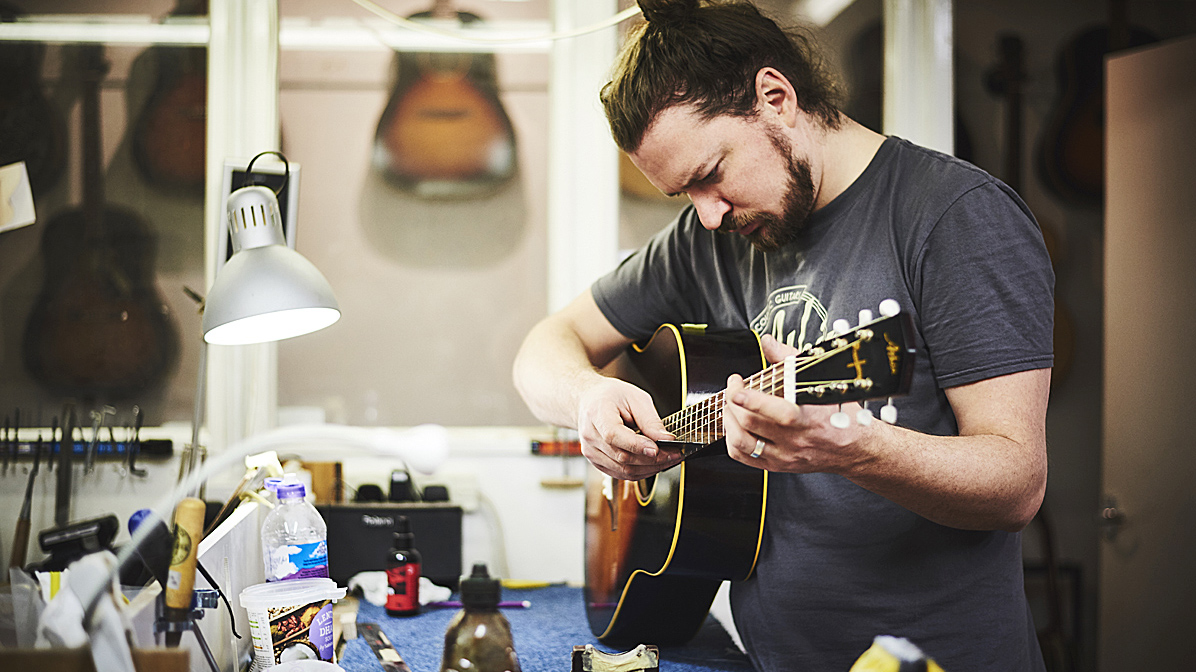
If you were lucky enough to receive a new acoustic guitar for Christmas, we’ve got a few tips here to help you improve the factory setup. Unless you’re incredibly lucky, most new guitars will need something doing to them to get them feeling right for you.
Factories seem to favor a safe action setting over a potentially too low setting, which might cause buzz. It’s understandable, really, considering we know that timber doesn't stay the same shape over time – especially a long, thin neck under tension. Who knows how long your guitar has been in the warehouse or what countries and climates it’s visited?
As such, it’s not surprising that you might need to get the tools out to get your new acoustic singing as intended! For the purposes of this acoustic guitar setup feature, we’ll be giving a new bargain B-stock Ibanez AEG a going-over to make it feel just right.
- These are the best acoustic guitars you can buy today
- Check out the best acoustic guitars under $500
- Find the best acoustic guitar strings for you
Destringing
You can trust Guitar World
Firstly, let’s loosen the who-knows-how-old acoustic guitar strings for removal and replacement. Buy a brand you trust and a size you like; we’re going for some Elixir light gauge 12s – we’ll put them on later.
Oiling the fretboard
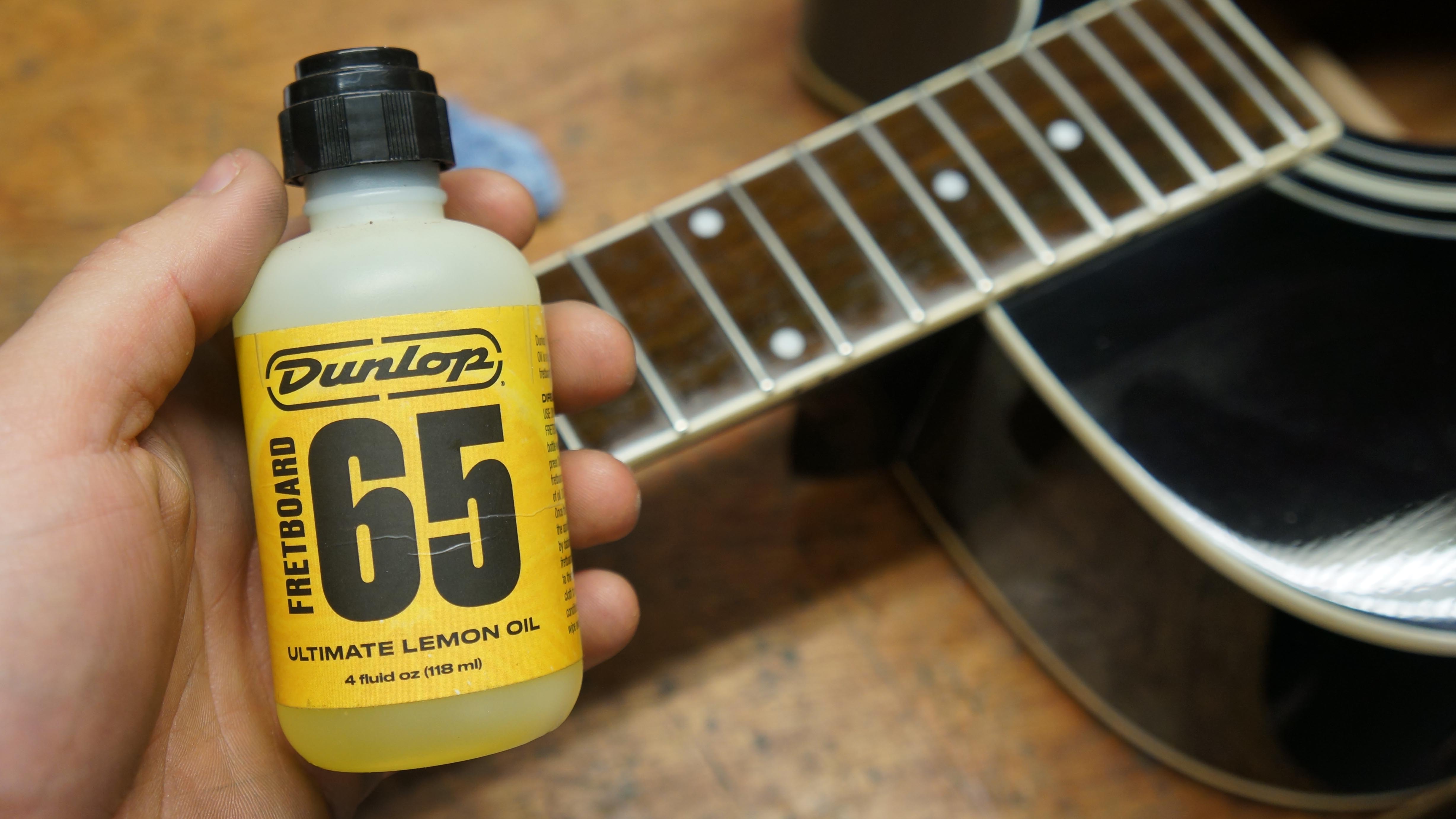
With the strings out of the way, now’s a great time to give the fretboard some nourishment; new guitars benefit just as much as vintage ones. Dunlop 65 lemon oil is readily available at musiciansfriend.com, and the oils are great for the rosewood fretboard. Rosewood, Pau Ferro, Ebony and other unfinished fretboard timbers all love this.
So how do you tell if it’s needed? The fretboard timber might look pale and dry, but it can also become brittle and shrink, and in some cases it can even crack. This shrinking is no good for the frets, as they have a potential to come loose. If your fretboard is particularly dry, we recommend almond oil, which is a bit thicker.
Checking the tuners
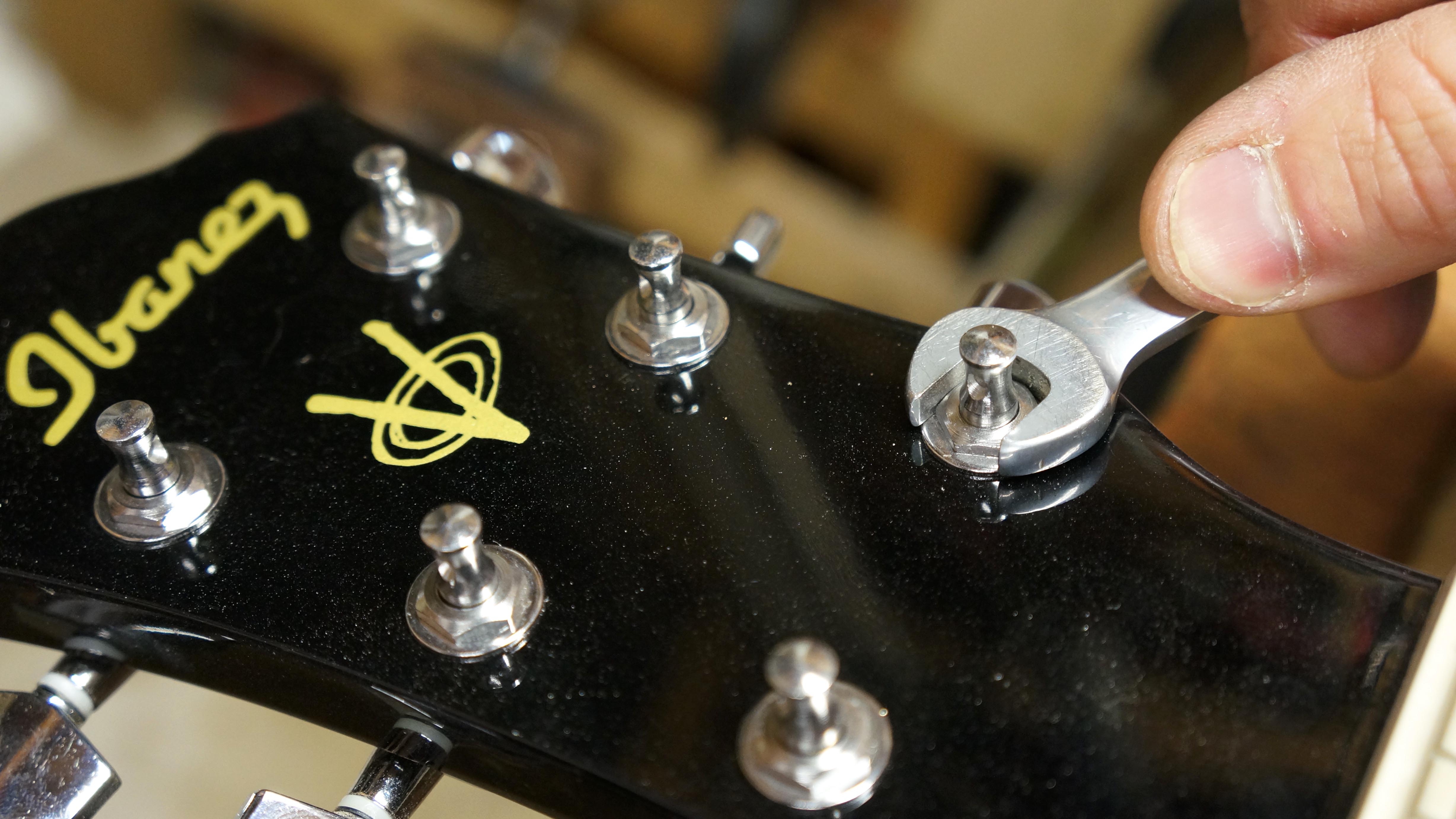
Check over the tuner nuts at the headstock. For some reason, these 10mm nuts are always loose… Don't go crazy on tightening them as they can snap, but clearly if the tuner isn’t fastened all the way, your guitar won’t stay in tune correctly.
Restring
It’s time to string up, pop on your new strings and tune the guitar up. As we'll be setting the guitar up in a moment, you must choose a tuning to work to. Don’t forget to chop the string ends off before they poke you in the eye!
Setting the truss rod
OK, so it’s scary truss rod time. The truss rod tunes in how bent the neck is generally – this is called relief. When the strings are at pitch, put a capo on the first fret; this eliminates the nut’s height from the measurement. Next, place your thumb on the 15th fret, which eliminates the bridge’s height in the same way. Using a feeler gauge, you can check the relief in the neck at the seventh fret.
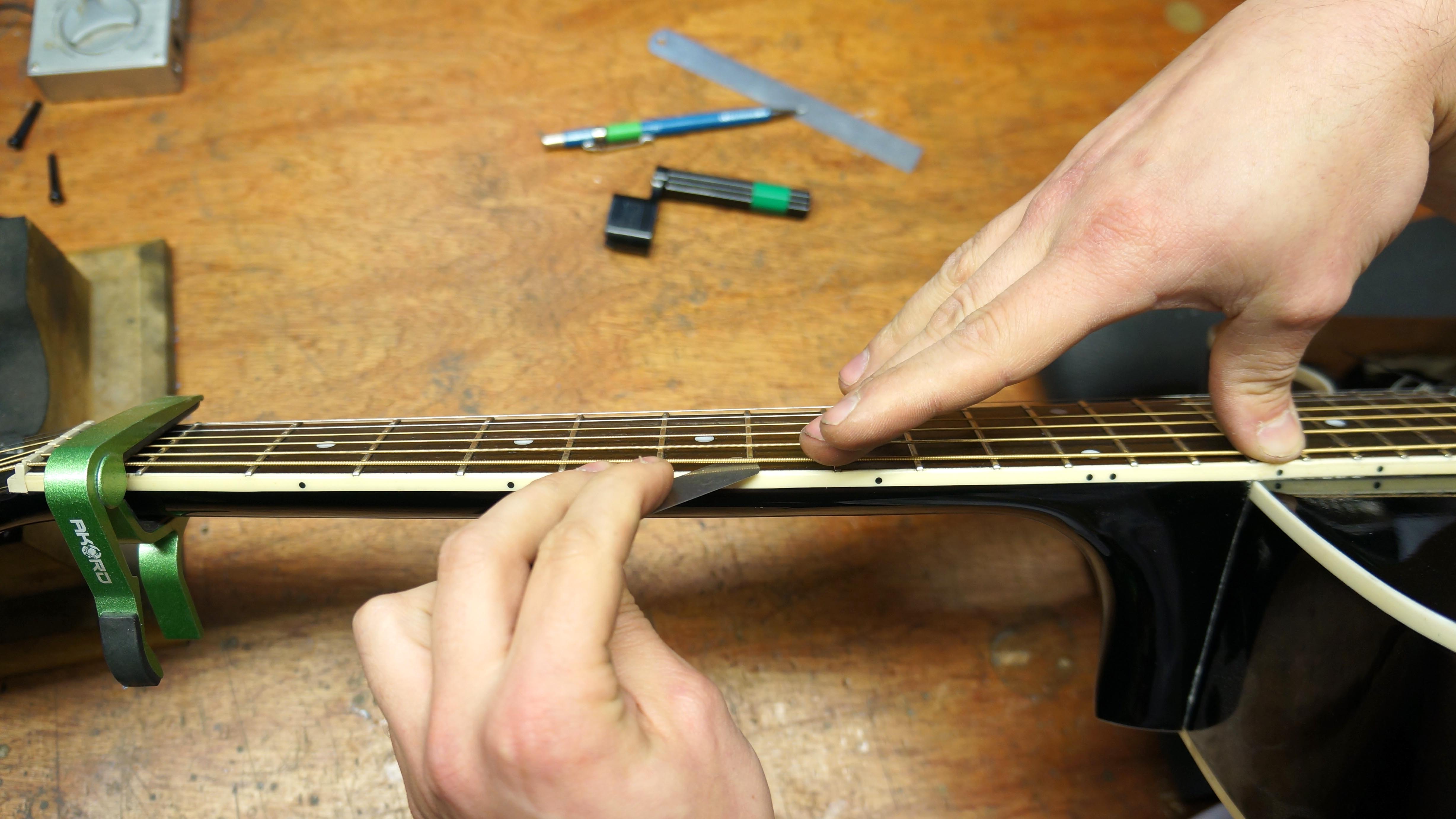
Use the feeler gauge to measure the clearance between the string and the top of the seventh fret. The measurement you should aim for is .007”, which suits most players. If this measurement is smaller, the truss rod needs loosening. If it’s larger, the truss rod needs tightening.
There’s a variety of truss rod styles out there, so it’s important to check which will fit your guitar first. Some truss rods are hiding under a truss rod cover on the headstock, but most acoustic ones are hiding inside the sound hole.
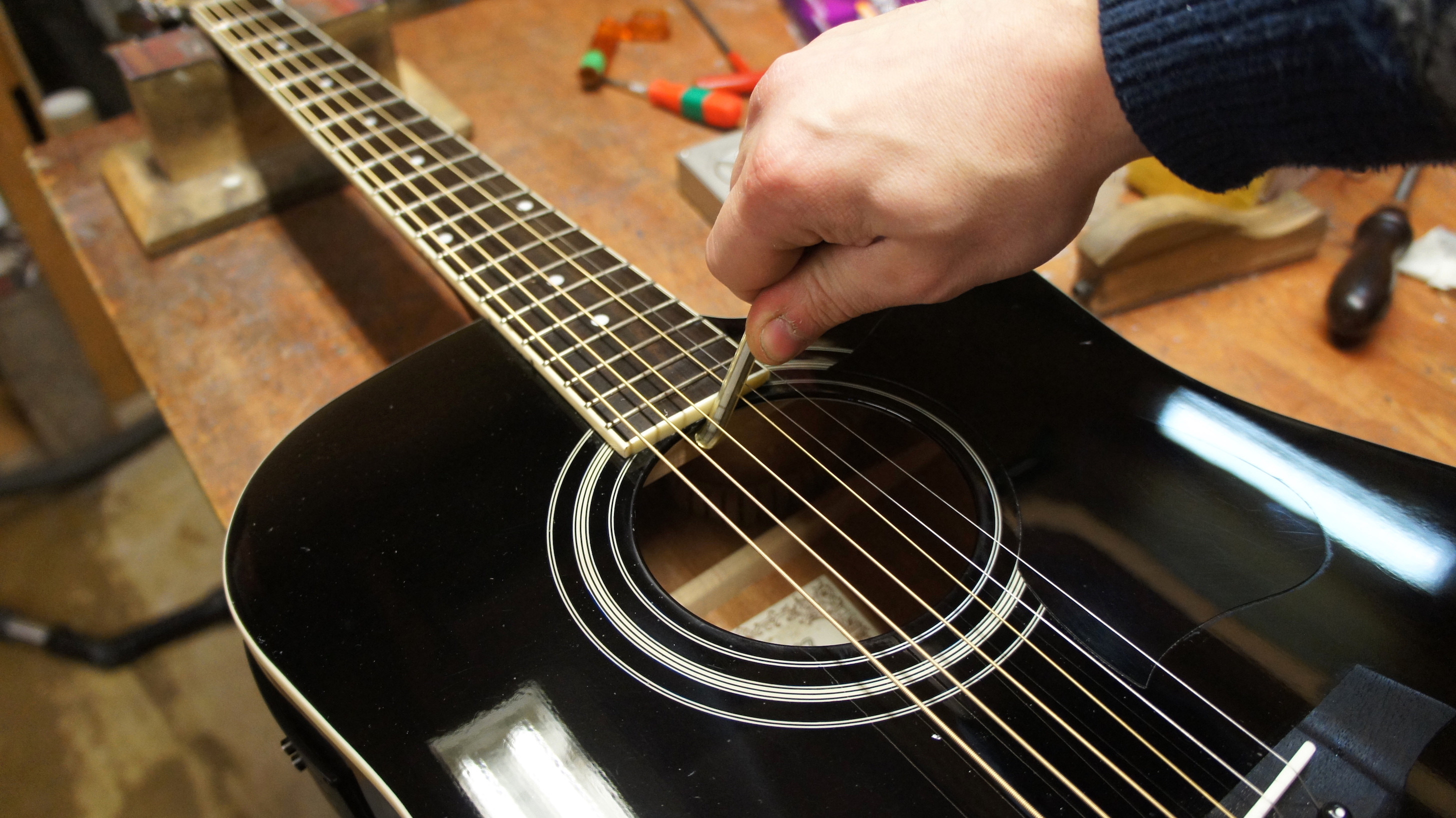
Make an adjustment and check your progress with the feeler gauge until you reach the clearance of .007”.
Checking the nut
With the truss rod set, we can turn our attention to the nut. This is a specialist task that is unfortunately best left to the professionals. However, we can see if there’s a problem with it with the tools we have here. Stick the capo on the third fret and, with the guitar in tune, check the clearances under the first fret with the feeler gauge.
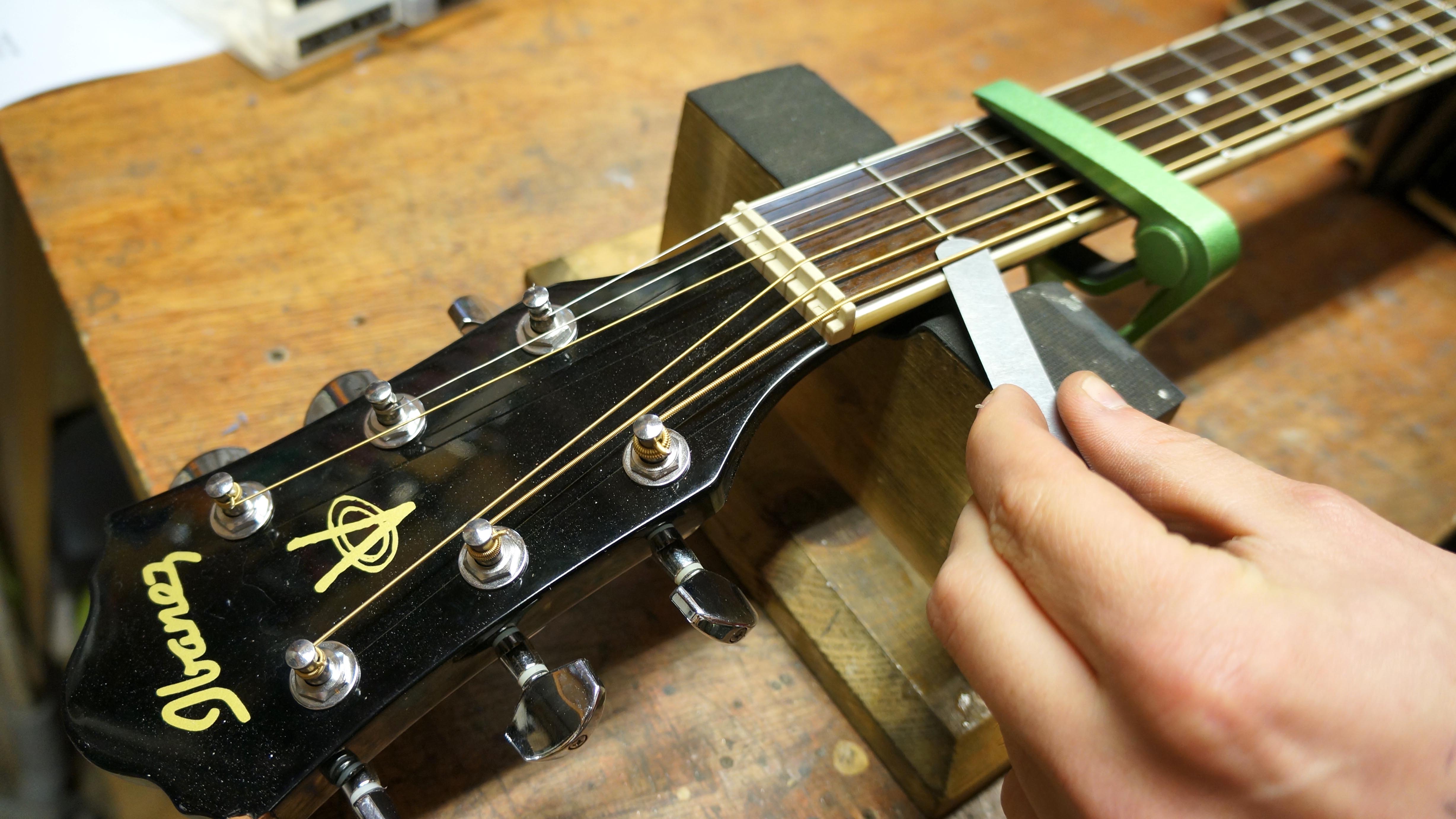
There should be a gap of .004” on the high E string, graduating to .008” on the low E string. Most new guitars are OK here, but it doesn't hurt to check.
Reading the action
The action is the term used for the string height of the guitar. Too low and it will buzz, too high and it will be excessively hard to play. The action will depend on the steps we’ve already taken. Setting the truss rod will dramatically change the string height reading, so that must be done first.
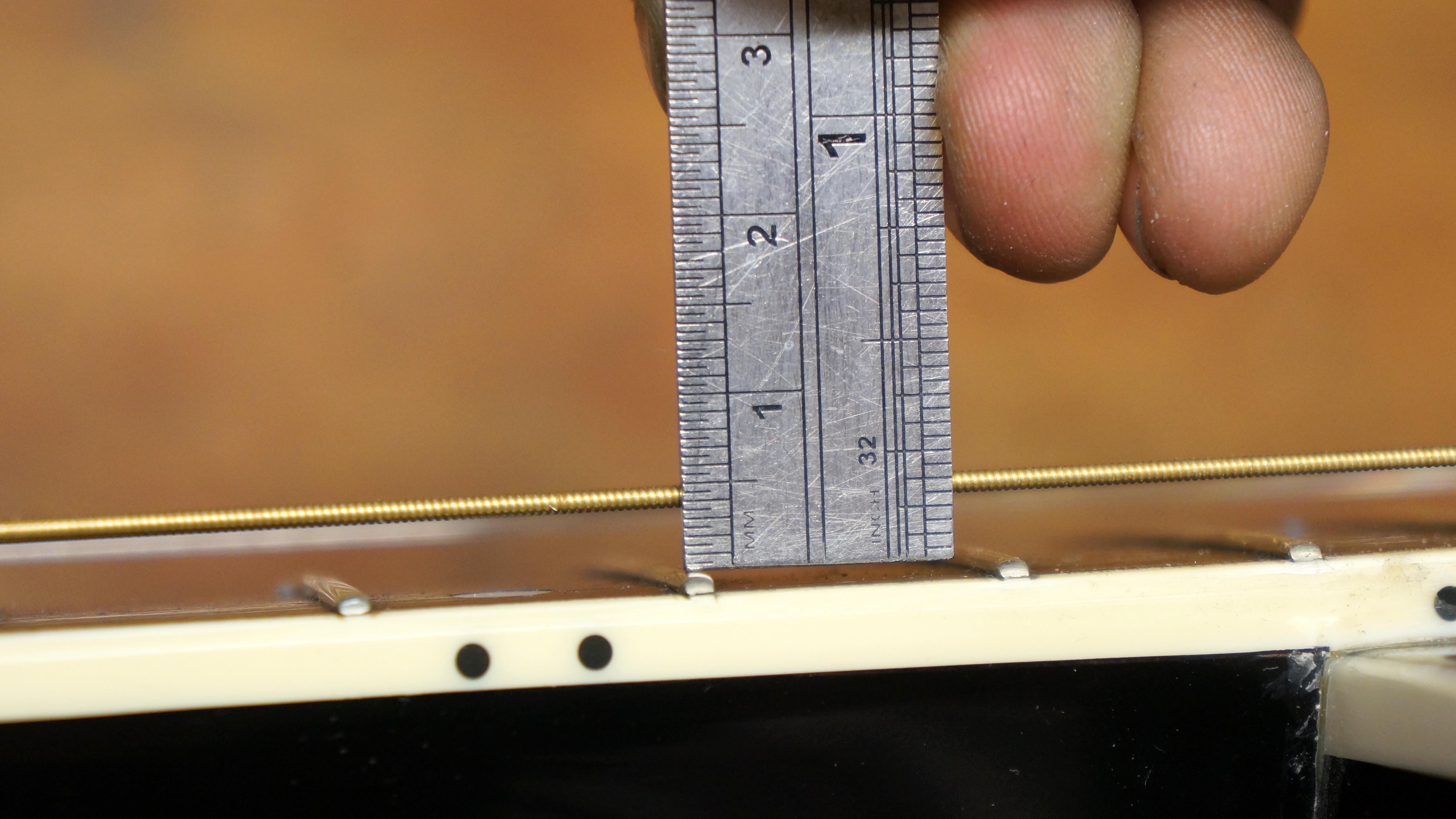
Take a reading at the 12th fret from the top of the fret to the bottom of the string on the low E and the high E. The low E should be 2.2mm and the high E should be 1.7mm for most players. The Dunlop Action Gauge from sweetwater.com is great for this.
When a string is plucked, it vibrates in an elliptical pattern, moving most in the centre of the string. The harder you play, the more the ellipse moves. What this means is the harder you play, the higher the action you need to avoid fret buzz. There are things you can do to help, like using a larger string gauge or a softer pick. Some guitar players aren’t too bothered by a bit of fret buzz. This is for you to decide!
Adjusting the bridge height
With everything else set, the last tweak is all about setting the saddle’s height. This is the final part of the action equation. Take out the saddle from under the strings and mark the reduction you need to make with a pencil. If there are shims under there already, take them out if you need to drop the string height.

If there’s no shims, you'll have to sand this down on a sanding board or a table- mounted belt sander if you have one. Take your time and be careful to keep the bottom profile at 90 degrees. Take a little off and re-string, then retune. Check your reading and make an adjustment based on that. It’s better to be safe than sorry.

Get The Pick Newsletter
All the latest guitar news, interviews, lessons, reviews, deals and more, direct to your inbox!
Jack runs an independent guitar setup and guitar repair service in Manchester, England. He serves the musicians of the Northwest of England, working on electric guitars, bass guitars, acoustic guitars and more. Jack has been writing the Fix Your Guitar column in Total Guitar Magazine since 2017.











